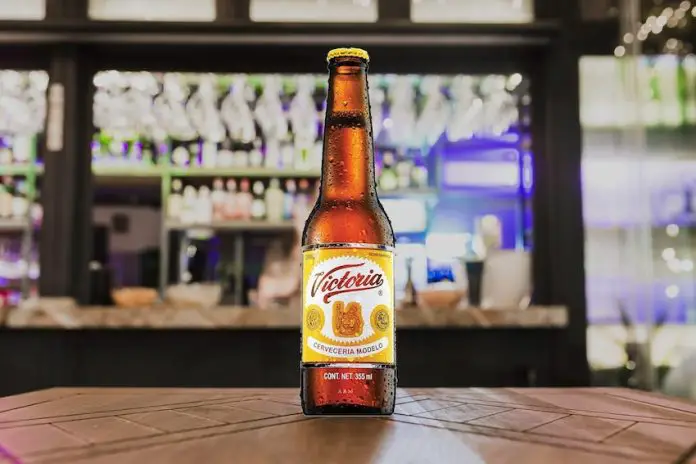Air-conditioning may be an invaluable aid to comfort. But nothing satisfies during the blazing heat of a Mexican summer quite like a bottle of the nation’s iconic ice-cold beer. The only question is: Which brand do we choose? There’s a variety of excellent options that include some of the world’s bestselling and most beloved brews. One of the most obvious choices though is Victoria, Mexico’s beer par excellence.
Not to be confused with the Spanish beer from Malaga of the same name, or the Australian bitter, it is acclaimed as the oldest beer in Mexico, there’s a compelling case to be made that it’s also still the best.
History and legacy matter

Victoria, founded by Agustín Marendaz in 1865, has been around longer than any other Mexican beer brand and by a considerable margin. Carta Blanca, for example, wasn’t made until 1890, Dos Equis until 1897, Pacífico until 1900, Corona and Modelo until 1925 and Tecate until 1944.
Why is this significant? For starters, it’s noteworthy anytime a brand, of any kind, can maintain widespread popularity for 159 years, despite the best efforts of generations of competitors. But Victoria, as a pioneer of Mexican beer, also helped influence many of the brands that followed in its footsteps.
It must be noted that Mexico’s top beer brands are almost all lagers. Naturally, there are historical reasons for this fact. Although brewing in Mexico dates to the 16th century, beer was a beverage made on a limited scale and for a few privileged consumers until the Second French Intervention in the 1860s. Maximilian, the Austrian archduke who that invasion briefly installed as Emperor of Mexico, was reputedly a lover of Vienna lager.
However, it was likely the immigration of Swiss and German settlers during this period that led to the establishment of this specialty as a popular beer style. Several breweries were founded around this time frame, with Victoria’s (subsequently named Cervecera Toluca) the only one to endure.
The Swiss brewers who created Victoria

Agustín Marendaz, the creator of Victoria, a Vienna lager, was born in Switzerland; as was the man who purchased his brewery operation a decade later, Santiago Graf. The early beers they produced reflected their European origin. Graf-formed Cervecería Toluca, for example, and in addition to its established Vienna lager, Victoria, from 1890 onwards also created pilsener and bock-based varieties. At least until the company was bought by Grupo Modelo in 1935. After the sale, all but Victoria and the eponymous Pilsener were discontinued, with the latter pulled from the market eight years later.
But by then, the template was set for the Mexican palate. Even now, many of the major beer brands in Mexico are made in the amber Vienna or golden pilsener style, or with slight variations. Corona is a pilsener, as are Barrilito, Modelo Especial, Montejo, Pacífico, Sol, and other brands. Victoria, as noted, is a Vienna-style lager, as is Bohemia’s Oscura, Dos Equis’ Ambar Especial, Indio, and Negra Modelo. Meanwhile, in its native Europe, the Vienna-style lager had gone out of fashion by the time the First World War broke out.
Popularity and approval ratings are meaningful markers
The template is working. Today, Mexico is the world’s largest beer exporter, accounting for 30% of global sales and more than doubling the export value of any other country. That included traditional brewing titans like the Netherlands (Heineken, Amstel), Belgium (Stella Artois), Germany (Beck’s, St. Pauli Girl), and the U.S. The latter, incidentally, is now by far the biggest beer importer.
Of course, plenty of that free-flowing Mexican beer is imbibed domestically, too, and based on a survey from November 2023, the most popular beer brands among Mexican consumers are Modelo Especial — notably also currently the best selling beer in the U.S. — and Victoria, with Heineken a surprising third. After 159 years, it’s a telling reflection of Victoria’s ongoing relevance in the marketplace that it remains such a favorite.
The most Mexican of Mexican beers
Victoria’s clever marketing is undoubtedly responsible for some of its continuing robust popularity. Its name is Spanish for victory, and slogans reflecting patriotic sentiments — “Victoria, la Victoria de México,” “Victoria, la Victoria es nuestra,” and “Tu Victoria está aqui,” for example — have long been a specialty.
Victoria has also aligned itself with Mexico’s mestizo culture, and its corollary values of diversity and inclusion. These ideas are embodied in its beer. Just as Mexico’s population blends races and cultures, the company says, Victoria blends multiple characteristics. Stores tout the beer’s mestizo bona fides, while ad campaigns remind consumers of Victoria’s connection to Mexican history and culture.

Great taste plus appealing packaging
Taste is by any measure subjective, which is why the question of it has been left for last. But Victoria has a long-standing reputation for quality in this area, too. The amber-colored quaff is distinguished by its smooth texture and crisp drinkability, with a depth of flavor that sets it apart from lighter pilseners.
Still made at the original brewery in Toluca, and at facilities in Guadalajara, Mexico City, and Monterrey, Victoria remains one of the standouts for Anheuser-Busch InBev-owned Grupo Modelo, which along with the Heineken International-owned Cervecería Cuauhtémoc-Moctezuma has dominated the Mexican brewing industry since the middle of the 20th century.
And it sure does go down easily on a hot summer day. Whether consumed in a can or one of several bottle sizes. The 335-millilitre (12-ounce) bottle is the standard, instantly recognizable by the brand’s signature yellow label featuring Gambrinus, a rotund, possibly mythological European character remembered as the “king of beers” — sound familiar? But smaller 210-milliliter “cuartitos” are also readily available, as are 940-milliliter (32-ounce) “caguamas.” The latter family-sized model was named for the loggerhead turtle and was invented back in 1960 by Carta Blanca. Pacífico, meanwhile, is responsible for the alternatively dubbed “ballenas,” though both are icons of Mexican beer.
Is it just me, or is anyone else beginning to get thirsty?
Chris Sands is the Cabo San Lucas local expert for the USA Today travel website 10 Best, writer of Fodor’s Los Cabos travel guidebook, and a contributor to numerous websites and publications, including Tasting Table, Marriott Bonvoy Traveler, Forbes Travel Guide, Porthole Cruise, Cabo Living and Mexico News Daily. His specialty is travel-related content and lifestyle features focused on food, wine and golf.
